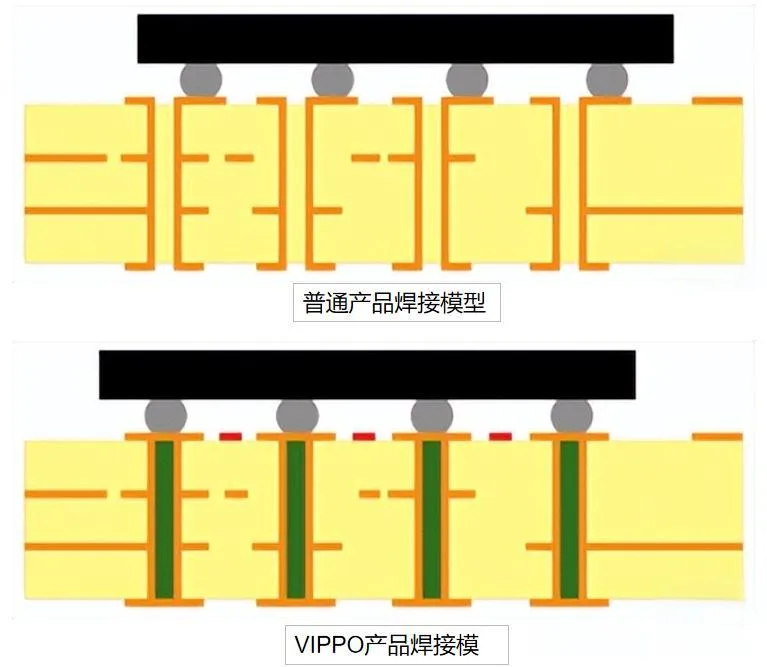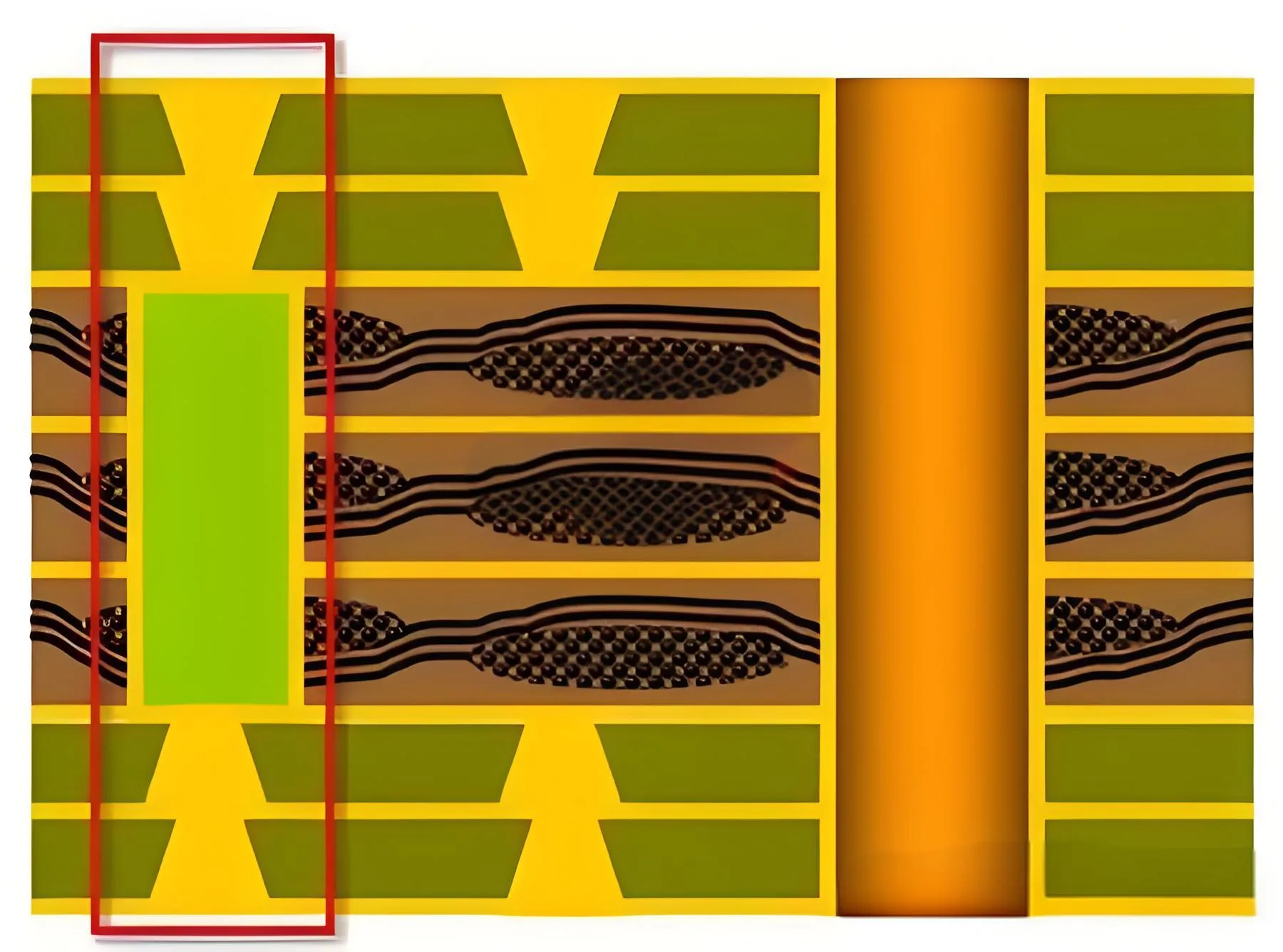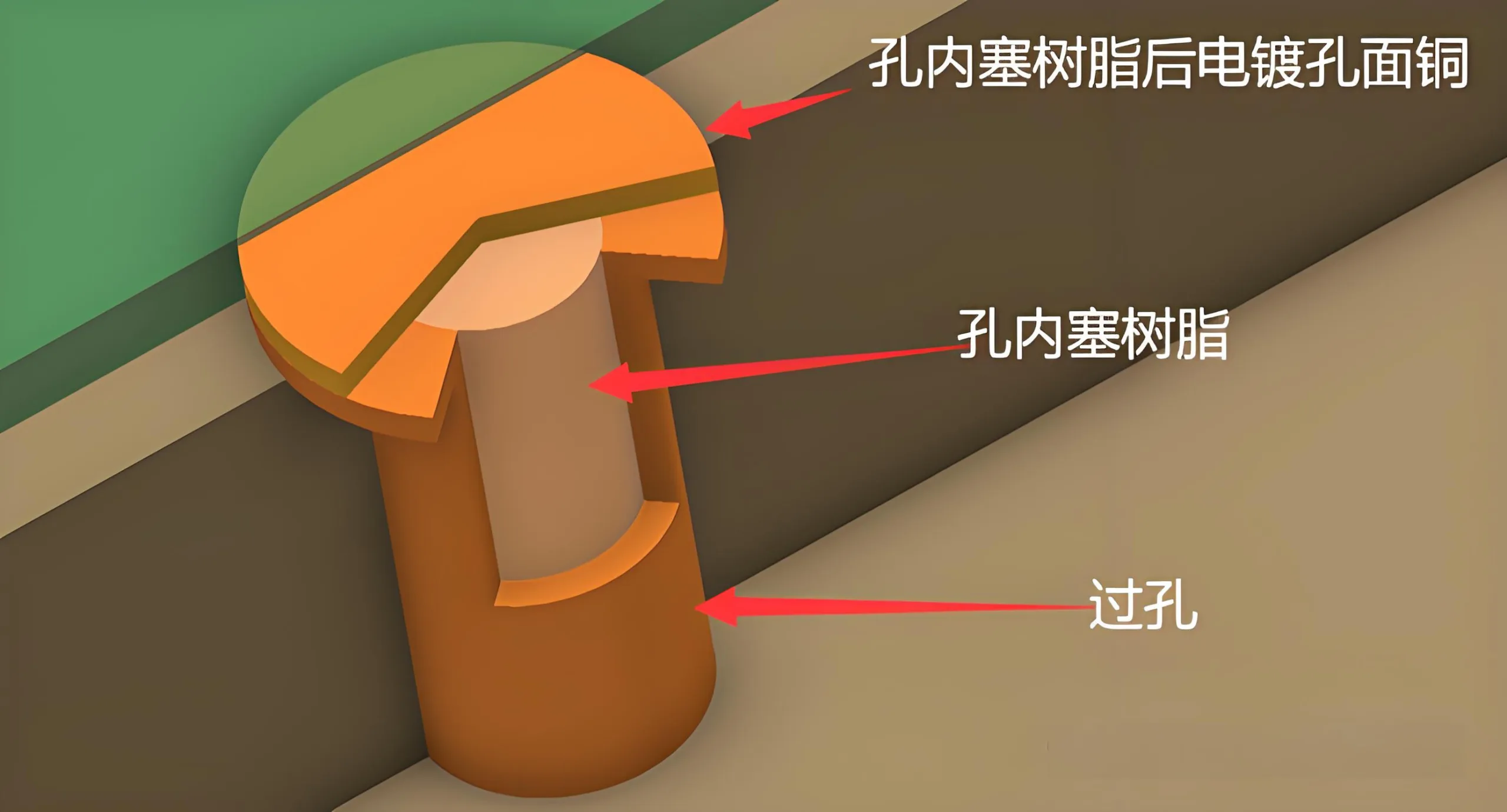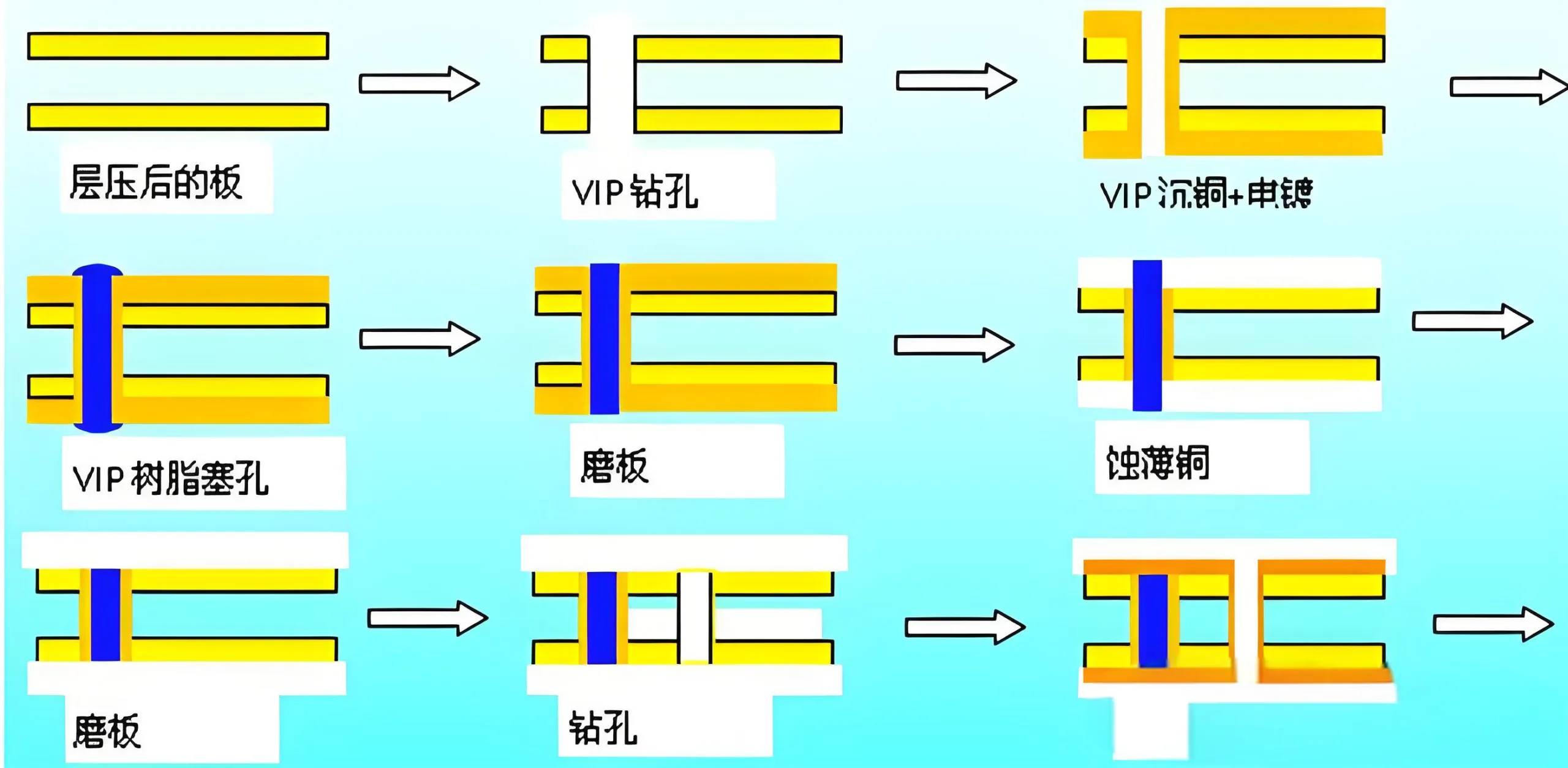В сегодняшнем быстро развивающемся ландшафте электронных продуктов, миниатюризация и высокая производительность стали необратимыми тенденциями. С широко распространенным внедрением смартфонов, носимые устройства, и различные умные продукты IoT, печатные платы (печатные платы), Как нейронный центр электронных устройств, сталкиваются с растущей сложностью дизайна и уровнями интеграции. На этом фоне, Виппо (Закрытие/POVF) Технология появляется в качестве ключевой связи в производстве печатных плат высокой плотности, особенно в приложениях на BGA (Шариковая сетка массив) подушечки, демонстрируя беспрецедентные преимущества.
Традиционные проблемы и рождение Vippo

Диаграмма сравнения моделей пайки между обычной печатной платой и технологией Vippo Technology.

Виппо
В традиционном дизайне печатных плат, Справочные отверстия использовались в основном для электрических соединений между компонентами. Однако, с резким увеличением плотности проводки, Традиционные скважины борются за удовлетворение требований маршрутизации высокой плотности. Появление технологии Microvia в некоторой степени облегчило эту проблему, обеспечивая более высокие соединения схемы плотности с помощью меньших размеров отверстий и более жестких аранжировок. Еще, Проблемы с надежностью ограничивали его применение в некоторых высококлассных продуктах. Следовательно, В отрасли возникла срочная необходимость романа через Treatm
Технология ENT, которая может удовлетворить как требования к подключению высокой плотности, так и обеспечить надежность, приводя к разработке технологии Vippo.

Структурная диаграмма Vippo
Vippo Technology, Коротко для Via In Pad с переполненной заполнением, Инновации, заполняя проводящий материал внутри VIA и добавляя слой медной крышки, с поверхностью прокладки у входа VIA. Эта конструкция не только решает проблемы припадения, но и эффективно предотвращает проникновение пасты или потока во время SMT (Технология поверхностного крепления) процесс, Избегание рисков, связанных с производством газа, влияя на качество пайки.
Процесс производства и технологические инновации
Производственный процесс технологии Vippo в основном включает в себя бурение, через подключение, и дополнение к медной крышке. По сравнению с традиционными или половинами обработкой процессов, Уникальная особенность Vippo заключается в дизайне медной крышки, Значительное повышение производительности и надежности пайки Пчеты. Однако, Внедрение этой технологии также приводит к увеличению производственных затрат, по оценкам, поднимается приблизительно 15% к 25%. Более того, Из -за прочности связывания между медной крышкой и подушкой, В процессе пайки существует риск отряда, требуя более точного управления процессами от производителей.

Vippo процесс
Чтобы учесть слабую силу связи между смолой и медью, Промышленность постепенно стандартизировала технологические процессы Vippo, Внедрение двух основных инноваций: во-первых, Снижение основной толщины меди за счет травления и увеличения толщины вторичного гальванизации (Закрытие меди) чтобы обеспечить готовую толщину медной крышки, по крайней мере, 15 микрометры, тем самым усиливая силу связи и проводимость; во-вторых, Использование химического меди, Дальнейшее улучшение силы связывания между медной колпачкой и смолой и обеспечением стабильности во время пайки.
Разнообразные применения технологии Vippo
Помимо соединений высокой плотности на BGA Pads, Технология Vippo также выделяется в HDI (Взаимодействие высокой плотности) Технология с помощью приложений для укладки. Приняв технологию Vippo, Можно уменьшить количество нажатых и лазерных буровых операций, Переход от произвольных взаимосвязанных структур к стандартным двухслойным конструкциям ИЧР. Это не только снижает производственные затраты, но и сокращает время заказа (Лейтенант), Поддержка быстрой итерации электронных продуктов.
Кроме того, Технология VIPPO эффективно устраняет емкостные эффекты. В обычном бо/бо (Похоронен и слепой через) структуры, Наземные слои внизу часто вызывают емкостные эффекты, которые разлагают качество передачи сигнала. Применение технологии Vippo изменяет структуру, чтобы уменьшить эти емкостные эффекты, Повышение общей производительности совета директоров.
Ключевые контрольные точки и стандарты IPC
Строгий контроль качества имеет решающее значение во время реализации технологии Vippo. Стандарт IPC-6012 Определяет четкие требования для критических параметров технологии VIPPO, в том числе толщина в медь, Оберните толщину, и обернуть длину. Точное управление этими параметрами непосредственно влияет на электрические характеристики и надежность PCB.

Vippo Slice
(Примечание: Приведенная выше диаграмма представляет собой схематическое представление о поперечном сечении; Фактические перекрестные сечения технологии Vippo должны быть подробно рассмотрены в соответствии со стандартом IPC-6012.)
Путем изучения диаграммы поперечного сечения по стандартам МПК, можно проверить, соответствуют ли параметрам требования, Например, если толщина заглушения меди достигает минимального указанного значения, и если толщина обертывания и длина равномерны. Эти проверки жизненно важны для обеспечения качества технологии Vippo.
Заключение
Как инновационное достижение в индустрии печатных плат, Технология Vippo не только решает технические проблемы в соединениях высокой плотности, но и поддерживает миниатюризацию и высокую производительность электронных продуктов. С постоянным технологическим созреванием и оптимизацией затрат, Технология Vippo готова к более широким приложениям, продвижение электронного производства на новые высоты. В будущем, как технологии, такие как 5G и IoT Deeceen, Технология Vippo будет играть еще более значительную роль, Стать мостом и облигацией, соединяющим цифровой мир.
 ЛОГОТИП УГКПБ
ЛОГОТИП УГКПБ

